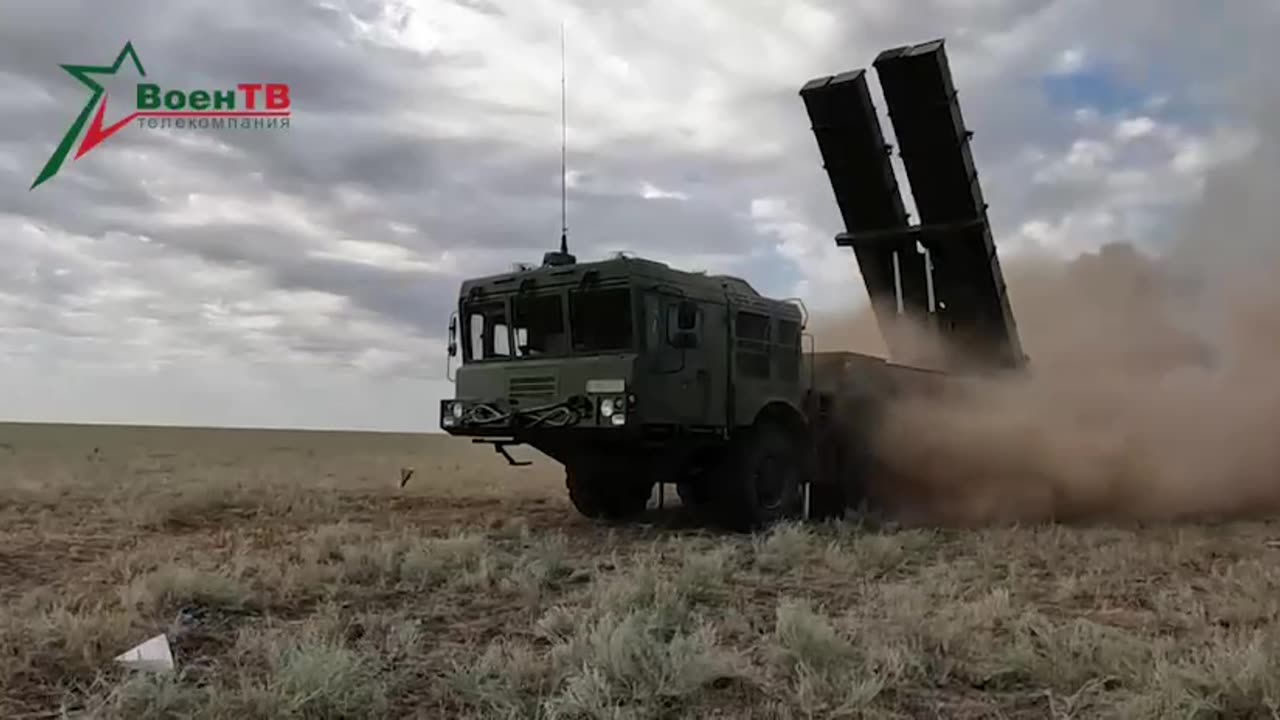Premium Only Content

Unique technical details
Unique technical details are captured on video while filming the exercises of the crew of the B-300 Polonez-M dual-caliber MLRS of the Missile and Artillery Forces of Belarus, practicing striking a simulated enemy target at a distance of 300 km.
In addition to demonstrating the batch reloading of twin transport and launch containers with 301mm A200 guided projectiles, which is carried out 4-6 times faster than the sequential reloading of the 9M544/549 missiles in the guides of the Tornado-S MLRS, we can see the aerodynamic layout of the maneuvering combat stage of the improved 2-stage 301mm A200 guided rocket.
This stage has a "lifting body" configuration with all-moving tail aerodynamic rudders, which ensure anti-aircraft maneuvers with overloads of up to 30G at speeds in a 90 degree dive mode of about 4-2.3 M (depending on the distance to the target).
For better lifting qualities, implementation of the gliding effect and greater static stability, this stage is equipped with additional low-elongation wings with a developed chord, located behind the center of mass of the missile. The layout of this combat stage is similar to the layout of the MIM-104F PAC-3MSE SAM interceptor and, remarkably, in the future it can be additionally equipped with an active-passive radar homing head, ensuring the detection and capture of radio-emitting and radio-contrast targets, including enemy ground radars, launchers, as well as air targets, including AWACS aircraft and tactical aviation.
In other words, the aerodynamic configuration of the combat stage of the missile A200 assumes its multifunctional use, from striking ground targets to solving anti-radar and air defense/missile defense task
Like and subscribe to the channel fernballan
-
 LIVE
LIVE
RalliedLIVE
7 hours ago $0.65 earnedWARZONE WINS ALL DAY w/ RAL
484 watching -
 LIVE
LIVE
Tucker Carlson
1 hour agoThe Pentagon Didn’t Fire Dan Caldwell Over Leaks. They Fired Him for Opposing War With Iran.
9,142 watching -
 LIVE
LIVE
The Jimmy Dore Show
2 hours agoHillary Calls for Imprisoning Hillary! Rogan MOCKS Douglas Murray! w/ Kari Simpson & Katie Pasitney
14,084 watching -
 LIVE
LIVE
JustPearlyThings
40 minutes agoHigh Value Men Are Happy With Wives That Are Mid (Call-in Show) | Pearl Daily
413 watching -
 58:57
58:57
Donald Trump Jr.
3 hours agoAmerica First, Always. Interviews with Ned Ryun & Kenny Cody | TRIGGERED Ep.235
72K59 -
 52:11
52:11
BonginoReport
4 hours agoDHS Sec Noem ROBBED By Masked Man on Easter - Nightly Scroll w/ Hayley Caronia (Ep.31)
46.8K48 -
 1:13:46
1:13:46
Kim Iversen
4 hours agoKlaus Schwab Steps Down—But the WEF Agenda Marches On
53.9K64 -
 1:24:34
1:24:34
vivafrei
5 hours agoVan Hollen's Tax-Payer Funded Vacay! Canada Liberals are Absolutely INSANE! Hegseth Hit Piece & MORE
70K25 -
 55:55
55:55
LFA TV
1 day agoEurope’s Religious Revival | TRUMPET DAILY 4.21.25 7PM
6.61K -
 LIVE
LIVE
Quite Frankly
6 hours ago"Death of Pope Francis, Klaus Retires, Easter Review" 4/21/25
1,064 watching